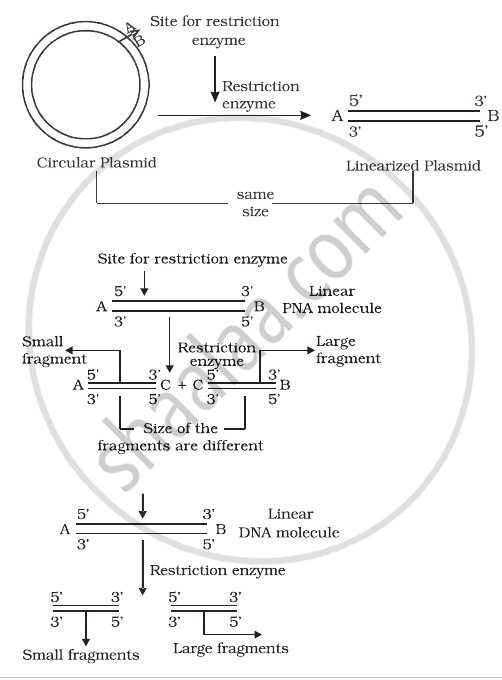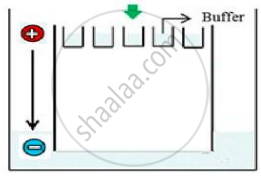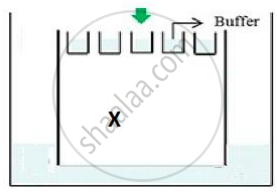Advertisements
Advertisements
प्रश्न
A plasmid DNA and a linear DNA (both are of the same size) have one site for a restriction endonuclease. When cut and separated on agarose gel electrophoresis, plasmid shows one DNA band while linear DNA shows two fragments. Explain.
उत्तर
It is because plasmid is a circular DNA molecule. When cut with enzyme, it becomes linear but does not get fragmented. Whereas, a linear DNA molecule gets cut into two fragments. Hence, a single DNA band is observed for plasmid while two DNA bands are observed for linear DNA in agarose gel.

APPEARS IN
संबंधित प्रश्न
Explain the roles of the following with the help of an example each in recombinant DNA technology :
Restriction Enzymes
Restriction enzymes ______.
There is a restriction endonudease called as EcoRI. What does co part in it stands for?
DNA fragments separate according to size through?
Which of the following bacteria is not a source of restriction endonuclease?
Restriction enzymes should not have more than one site of action in the cloning site of a vector. Comment.
Carefully observe the given picture. A mixture of DNA with fragments ranging from 200 base pairs to 2500 base pairs was electrophoresed on agarose gel with the following arrangement.

(a) What result will be obtained on staining with ethidium bromide? Explain with reason.
(b) The above setup was modified and a band with 250 base pairs was obtained at X.

What change(s) were made to the previous design to obtain a band at X? Why did the band appear at position X?
Given below is the stepwise schematic representation of the process of electrophoresis. Identify the 'alphabets' representing
- Anode end
- smallest/lightest DNA strand in the matrix
- Agarose gel

'EcoRI' has played a very significant role in rDNA technology.
- Explain the convention for naming EcoRI.
- Write the recognition site and the cleavage sites of this restriction endonuclease.
Identify the activity of endonuclease and exonuclease in the given image.
